|
 |
|
Shops and shopping in the middle years of the nineteenth century
By the 1850s, Wolverhampton had a large
number and wide variety of shops around the town centre. The
shops supplied local inhabitants with all of their daily
needs. Most of the local population lived within walking
distance of the shops, only the wealthier members of society
had their own transport, or could afford to use public
transport, such as it was at the time. In 1851
Wolverhampton’s population was 50,000.
There was a wide variety of products on
sale in the shops, thanks to improvements in the roads, made
by the turnpike trusts, relatively cheap transportation on
the canals and the coming of the railways. The first local
railway station opened at Wednesfield Heath in
July 1837, followed by a temporary
station built by the Shrewsbury and Birmingham Railway
Company in 1849, the High Level Station, originally
Queen Street Station, in 1852 and Wolverhampton Low Level in
1854.
The town centre had changed little in
many years, large scale demolition of slum properties, and
the building of new streets was still a few years away. Gas
lighting had been installed in the streets, but the local
water supply was still inadequate and a large number of people lived in
unsanitary conditions in the many slums. There was a second
cholera epidemic in 1849. Recent buildings included the
Theatre Royal in Cleveland Road, which opened in 1845. In
1846 a new Police Station and Law Offices opened in Garrick
Street and the South Staffordshire General Hospital opened
in Cleveland Road in 1849. In the same year, the new
Stafford Road Gas Works were completed and the Subscription
Baths opened. In 1850, the Orphan Asylum opened in Queen
Street and the Exchange building at the end of Exchange
Street was built between 1850 and 1853.

Part of the 1842 Tithe Map showing the
town centre.
Wolverhampton received its Charter of
Incorporation in March 1848, which led to the first council
elections in May of that year. The new council’s thoughts
soon turned to the building of a Market Hall, on land
opposite the Town Hall, alongside North Street. It opened in
March 1853.
For many years the outdoor market had
been held at High Green. There had been constant conflict
between the market traders and the Lord of the Deanery Manor
who had the right to charge market tolls. On market days the
whole area around High Green was cluttered with goods on
display and roads were jammed with hundreds of horses and
cattle, until the opening of the cattle market in 1848. The
new council purchased the market tolls in readiness for the
building of the new market hall and the outdoor traders
moved to the adjacent market patch. |
|
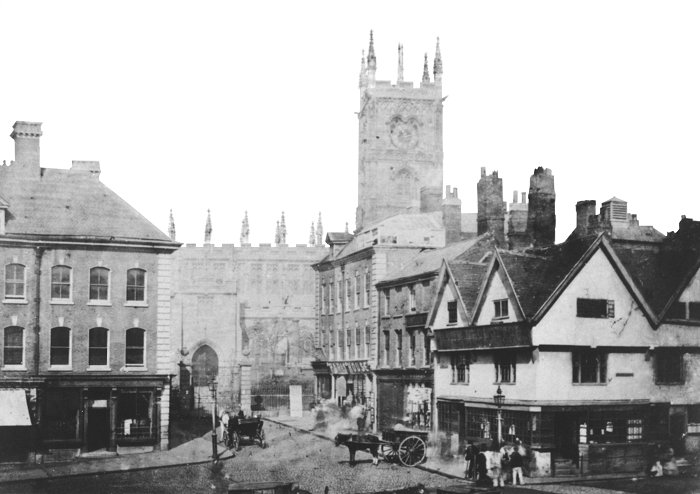
The view across High Green in the
mid 1850s, which must be one of the earliest photos taken
in the town centre. |
| High Green
Based on information from William
White's 1851 History, Gazetteer and
Directory of Staffordshire. |
| Chemists |
Jones, & Campion,
Fleeming and Seyde, William Wootton |
| Hat Shops |
Samuel Morris,
William Oldacre, Sidney and Dickenson |
|
Grocer and
Tea dealers |
Francis Baker,
Charles Solomon Clarke, Dakin and
Company, Henry Plant
Charles Smith, |
| Butcher |
Thomas and Samuel Jones |
| Boot and Shoe Maker |
Sidney & Dickenson |
| Book Shop and Stationer |
George Price |
| Ginger Beer maker |
Fleeming & Seyde |
| Public Houses |
The Hop Pole, John
Steward. The Swan Hotel, Thomas Smith,
|
| Linen & Woollen Drapers |
George Cox, Charles
Dunckley, Lovatt and Brook, Sidney and
Dickenson |
| Tailors |
Charles Dunckley,
Sidney and Dickenson |
| Tobacconist |
Clara Freeth |
| Spectacle Frame Maker |
A. Self and Company |
| Wine & Spirit Merchants |
John Cholditch,
Charles Solomon Clarke, George Cope,
John Jones, William Jones |
|
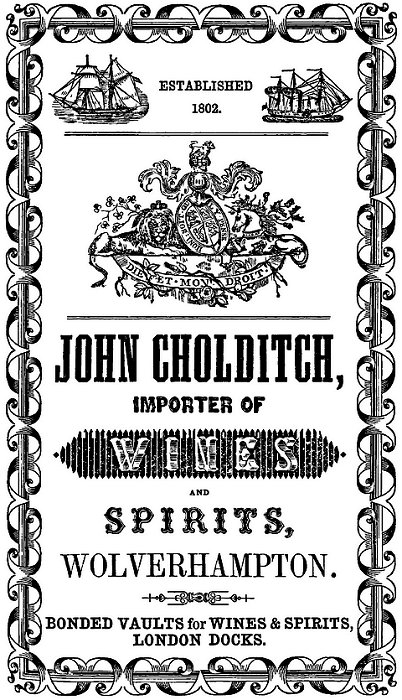 |
John Cholditch's shop was on
the corner of Lich Gates and Lichfield Street, where
Barclays Bank now stands.
It can be seen on the right hand
side of the photograph above and on the photograph
below.
From Melville & Company's 1851
Wolverhampton Directory. |
|
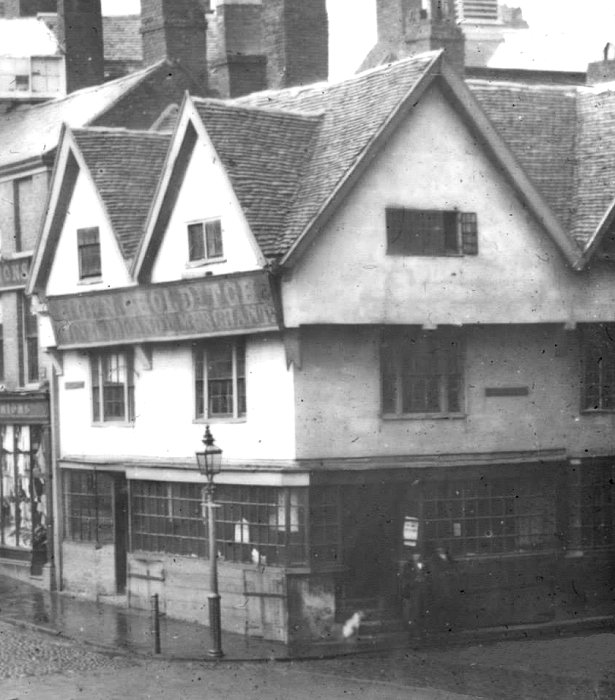
John Cholditch's shop. |
| One of John Cholditch's
neighbours in Lich Gates was Francis Baker.
From Melville & Company's 1851
Wolverhampton Directory.
|
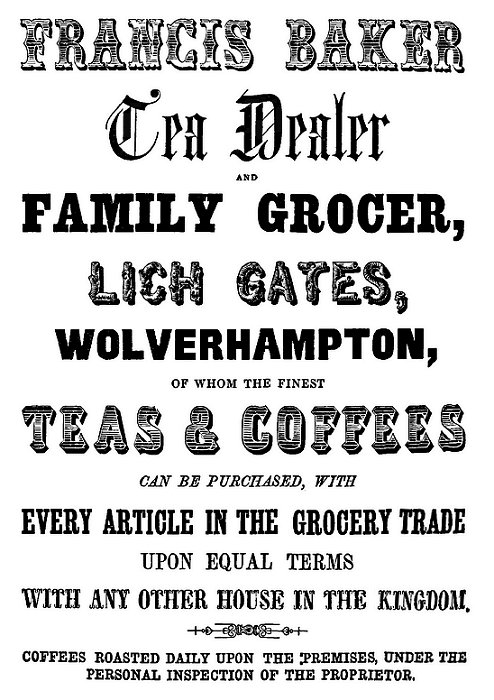 |
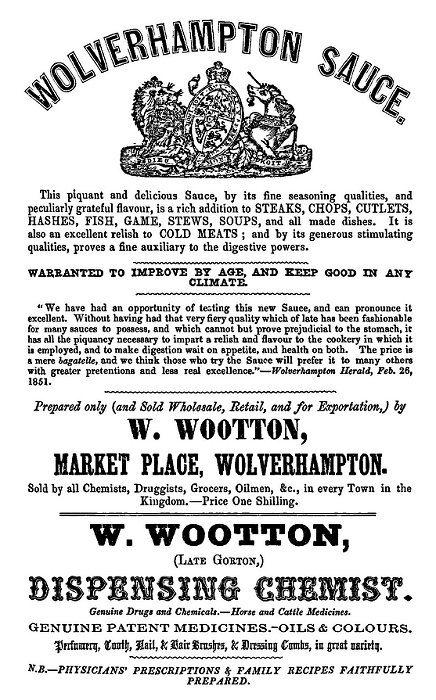
From Melville & Company's 1851 Wolverhampton
Directory.

From Melville & Company's 1851 Wolverhampton
Directory.
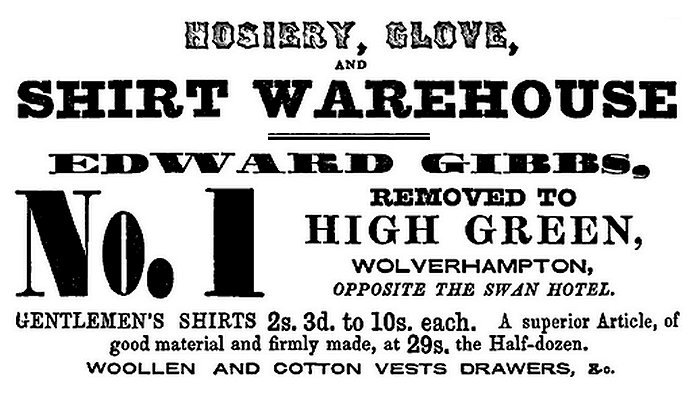
From Melville & Company's 1851 Wolverhampton
Directory.
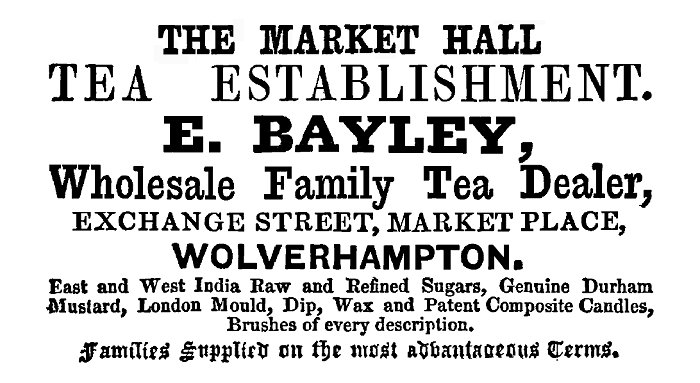
From Melville & Company's 1851 Wolverhampton
Directory.
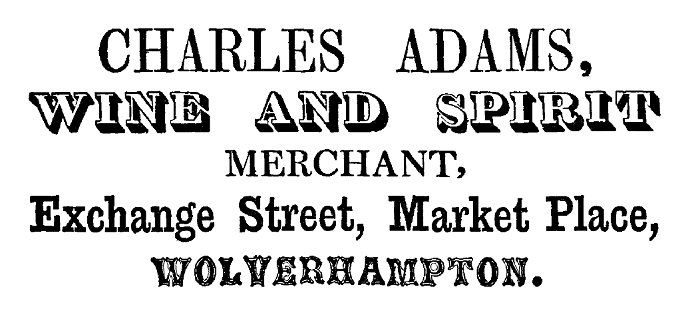
From Melville & Company's 1851 Wolverhampton
Directory.
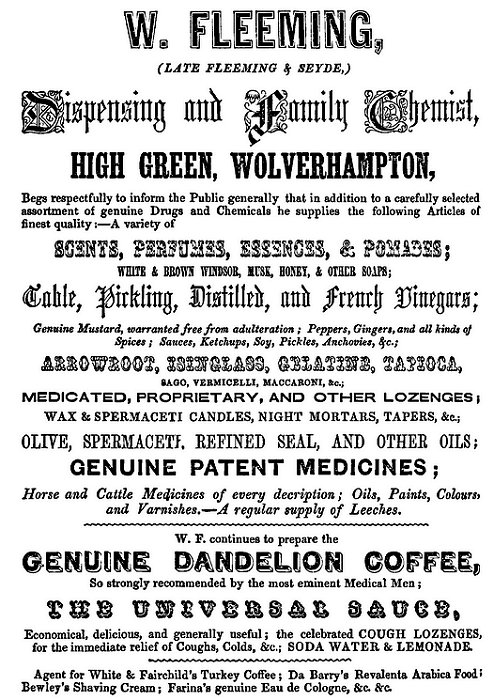
From Melville & Company's 1851 Wolverhampton
Directory.
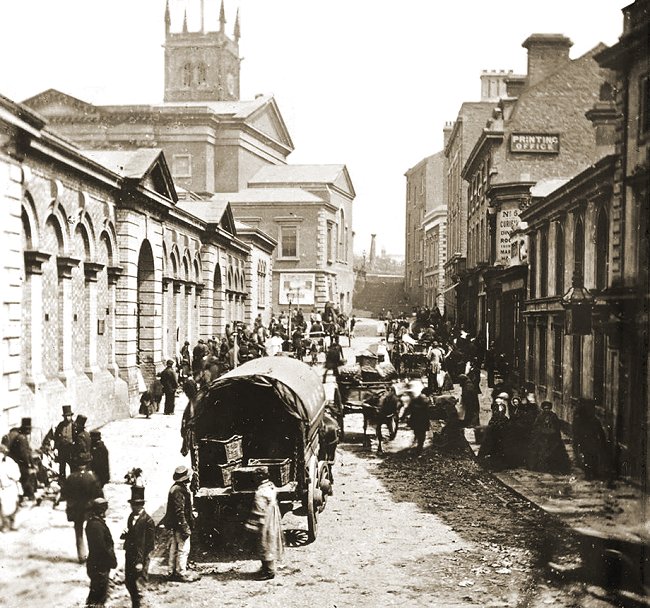
Looking up Cheapside, with the Market building
on the left and the Exchange in front of the church.
| Lichfield Street
Based on information from William
White's 1851 History, Gazetteer and
Directory of Staffordshire. |
| Café |
Francis Pyatt |
| Chemist |
John Hamp |
| Hairdresser |
James Horton |
| Grocer and Tea dealers |
William Maddock,
Samuel Underhill |
| Butchers |
Joseph Banks,
Elizabeth Brawn, Joseph Cotton, John
Russell |
|
Boot and
Shoe Makers |
James Cullett,
Thomas Finlow, Thomas Hadkinson, Thomas
Henshaw, Edward Murry James Pack, Martin
Pack |
| Baker and Flour dealer |
William Taylor,
Thomas Henry Weeks |
| Fishmonger |
George Bailey |
| Fruiterer |
Mary Green |
| Furniture Dealers |
Joseph Taylor, Henry Yates |
| Glass and China dealer |
John Cunningham |
| Public Houses |
The Noahs Ark,
Charles Russell. The White Rose, Joseph
Hampton |
| Beerhouses |
Esther Maria Hill,
Charles Mason, Francis Pyatt |
| Milliners |
Mary Ann Finlow,
Jane Kinsey |
| Maltster |
Samuel Underhill |
| Tobacconist |
Oliver McGregor |
| Shopkeeper |
William Palmer |
| Tailors |
William G. Gabb,
Sarah Kinsey |
| Watch & Clock Makers |
William Taylor |
| Wine & Spirit Merchants |
James Lloyd, Samuel
Underhil |
|
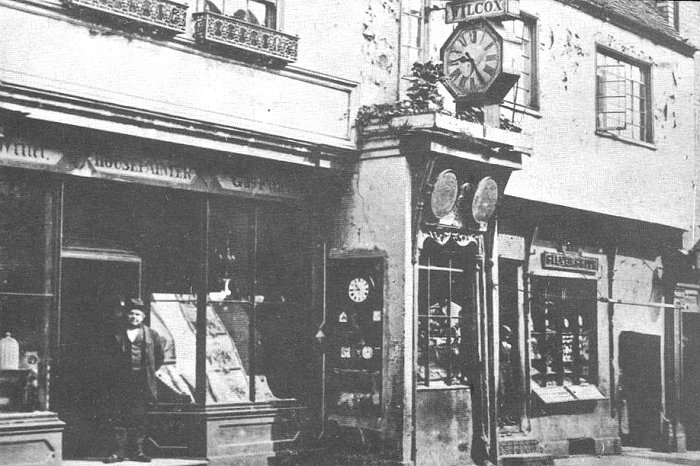
A familiar photograph of William Wilcox's shop at 16
Lichfield Street. William Wilcox was a watch and clock
maker who moved into the shop in 1860. Previously the
shop was occupied by William Taylor, also a watch and
clock maker. From an old postcard. See the advert below. |
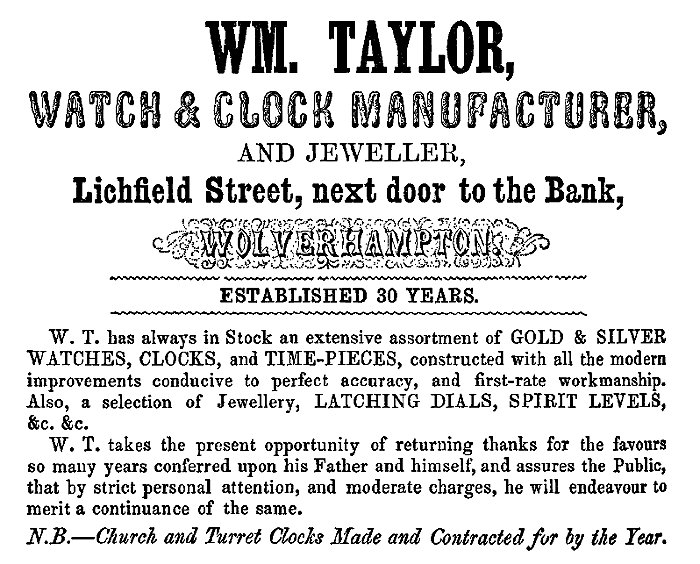
From Melville & Company's 1851 Wolverhampton
Directory.
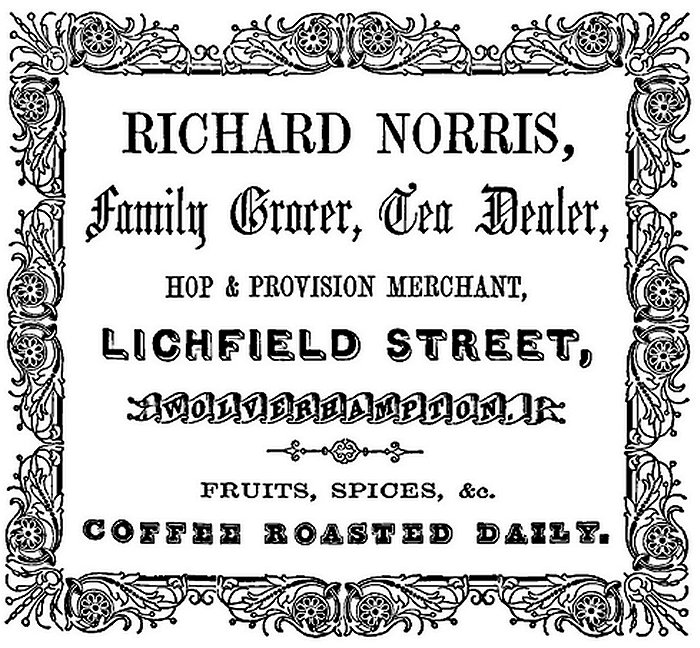
From Melville & Company's 1851 Wolverhampton
Directory.
| Cock Street,
later Victoria Street Based on information from William
White's 1851 History, Gazetteer and
Directory of Staffordshire. |
| Cutlery Dealer |
John E. Fereday |
| Confectioner |
Henry Hill |
| Cheese shop |
Joseph Harwick |
| Chemists |
Mander, Weaver and Company, Thomas
Banks |
| Haberdasher |
Ann Marsh |
|
Grocer and
Tea dealers |
William Alderton,
Harwick and Faulkner, William Nendick
and Company, Richard Sale
James Taylor, William Ward, Thomas York |
| Butcher |
Joseph Butler |
| Boot and Shoe Makers |
William Clifford,
John Hill, Edward Kenderdine, James
Walker |
| Baker and Flour dealer |
James Taylor |
| Fishmonger |
J. W. Jones |
| Glass and China dealer |
James Tunnicliff |
|
Public
Houses |
The Giffard Arms,
Mary Ann D'Arcy. The Golden Cup, Henry
Plant
The Hand and Bottle, William Norris. The
New Hotel, John Shaw Walker
The Spread Eagle, John Miller. The Star
& Garter, Julia Law |
| Milliners |
Mrs. Henry Smith,
William Swales |
| Linen & Woollen Drapers |
Thomas Cope, John
Critchley, Michael Henry Robinson |
| Maltsters |
Thomas Banks,
William Walker, Thomas York |
| Physician |
Peter Bell |
| Tailor |
Michael Henry Robinson |
| Straw Hat Maker |
William Swales |
| Watch and Clock Maker |
Leonard Frederick |
| Wine & Spirit Merchants |
James Harper, Henry
Plant |
|
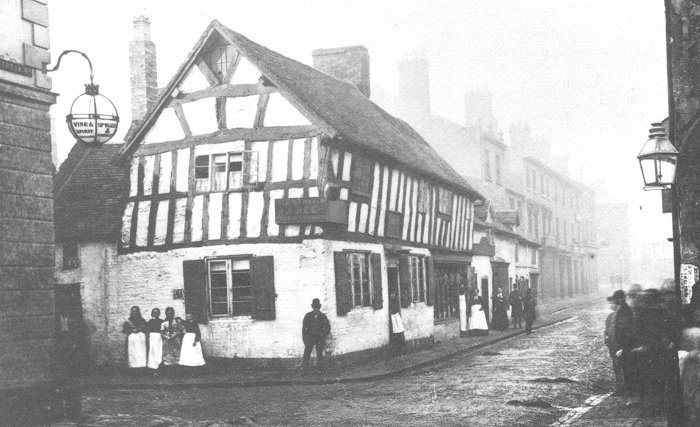
The view from the bottom of
Victoria Street, looking into Worcester Street in 1876.
The half-timbered building, the Old Barrel Inn, was
demolished a few years later when Worcester Street was
redeveloped. The pub moved to the bottom of Bell Street
at the junction of Victoria Street. From an old
postcard. |
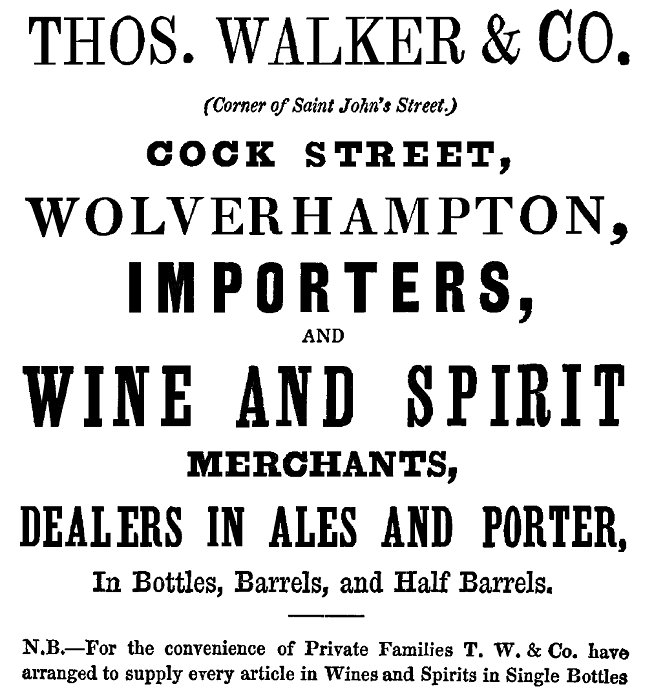
From Melville & Company's 1851 Wolverhampton
Directory.
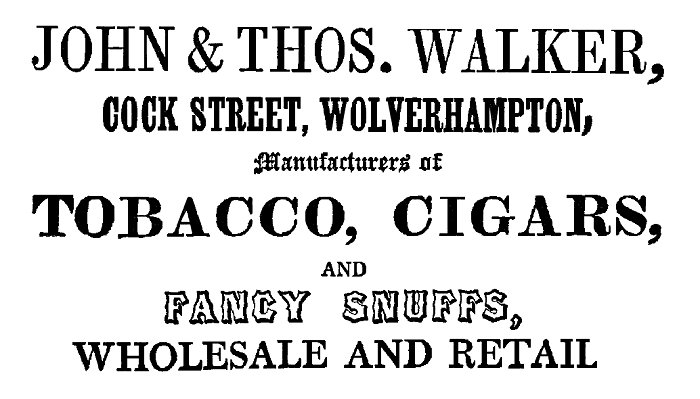
From Melville & Company's 1851 Wolverhampton
Directory.
| Darlington Street
Based on information from William
White's 1851 History, Gazetteer and
Directory of Staffordshire. |
| Confectioner |
Benjamin Bayliss |
| Cheese shop |
Joseph Harwick |
| Chemists |
Richard Fowke,
William Sanders |
| Haberdashers |
William Adams, Miss
Cliff, Haberdasher, Mary Harrington |
| Hat Shops |
William Adams,
William Henry Laxton, Joseph Lloyd,
Frederick William Neale |
| Grocer and Tea dealers |
William Baker,
Harwick and Faulkner |
| Butcher |
Thomas Walker |
| Boot and Shoe Maker |
Josiah Betts |
| Book Shop, Printer and
Stationer |
Joseph Bridgen |
| Ginger Beer maker |
William Sanders |
| Public House |
The Darlington Arms, Joseph Lowe |
| Beerhouse |
Evans Kirk |
| Milliners |
Hannah Evans, Mary
Harrington, Elizabeth Jeavons |
| Linen & Woollen Drapers |
William Adams,
Samuel Cliffe and Company, Edward
Collett, |
| Maltsters |
William Mortiboy,
George Northwood |
| Optician |
Edward Adey |
| Music shop |
James Griffiths |
| Physician |
Robert Little |
|
Tailors |
William Adams,
Edward Collett, Samuel Harris, Evans
Kirk, William Henry Laxton
Joseph Lloyd |
| Spectacle Frame Maker |
Edward Adey |
| Surgeon |
John Talbot Cartwright |
| Straw Hat Maker |
Elizabeth Jeavons |
| Watch and Clock Maker |
William Hay |
|

From Melville & Company's 1851 Wolverhampton
Directory.

From Melville & Company's 1851 Wolverhampton
Directory.
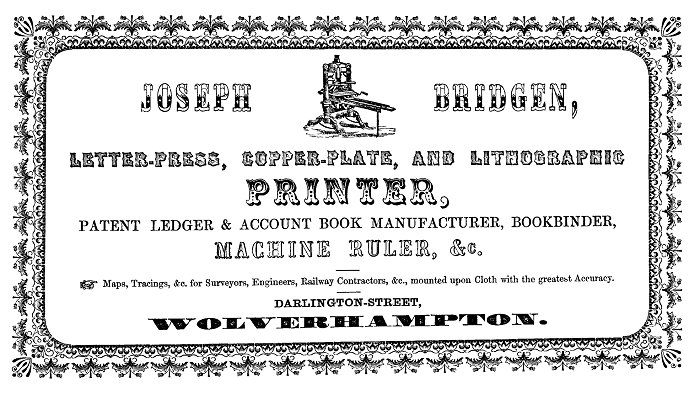
From Melville & Company's 1851 Wolverhampton
Directory.
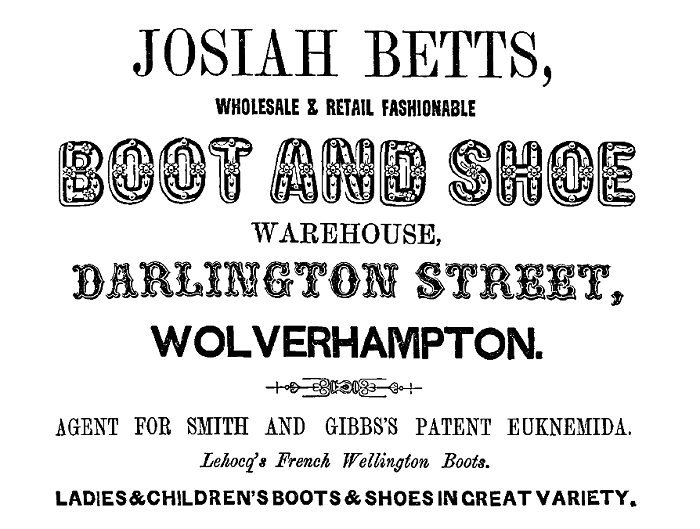
From Melville & Company's 1851 Wolverhampton
Directory.

From Melville & Company's 1851 Wolverhampton
Directory.
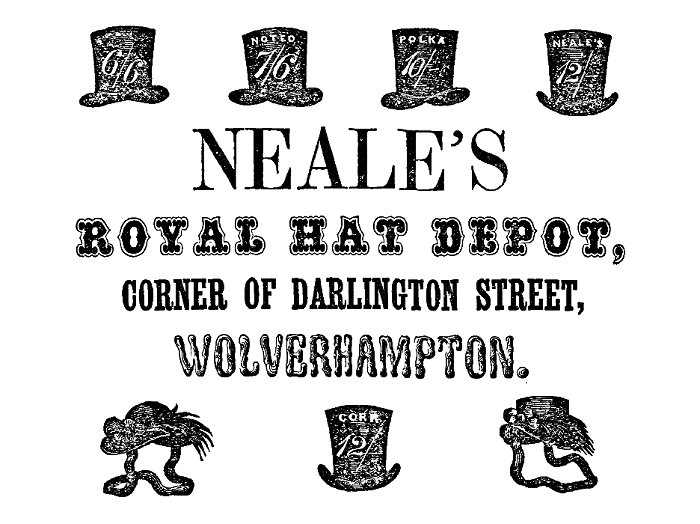
From Melville & Company's 1851 Wolverhampton
Directory.
|